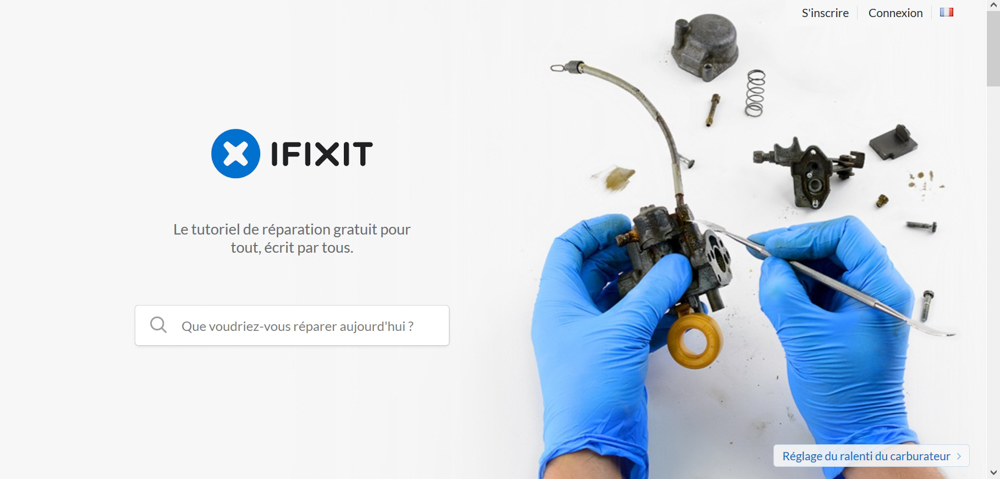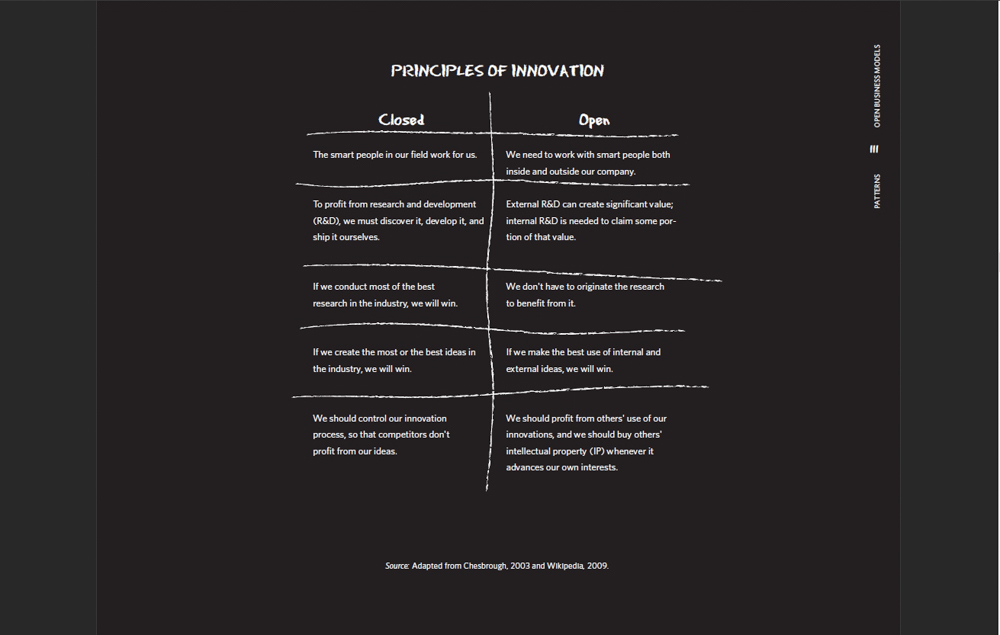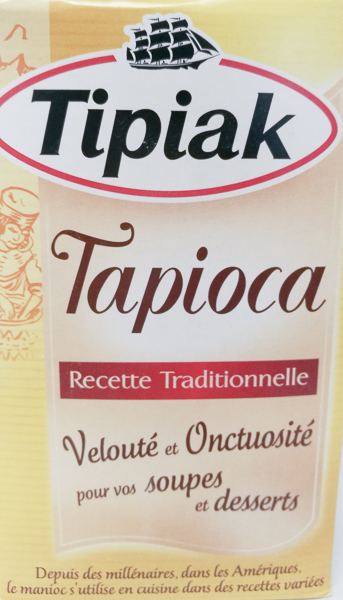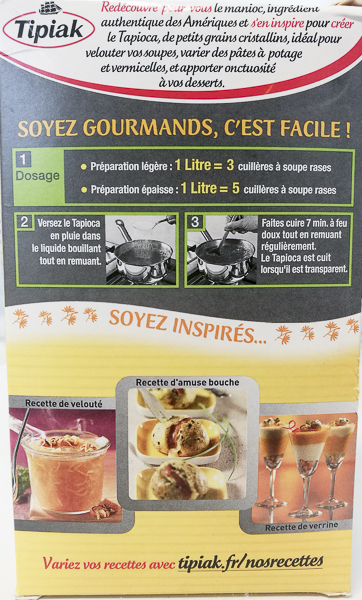10. Implications and applications#
Research :#
- Bernard Stiegler : the typology of the Consumer-Producer
-
Economic study for cooperative structures#
Example of an open platform to share information about repairing things :#
I’m interested in a project with an hybrid economic model : non profit + make profit.
I choose the project I fix it : it’s a website with a community, tools and tutorials to repair almost anything.
- for free : to share tools, tutorials, knowledge
-
have to pay for : tool kits, parts of machines…
| I Fix it : 46 037 Tutorials for these 12 746 Products |
|---|
 |
The Business model Canvas#
A tool made by Alexander Osterwalder to represent and build the cost structure for new projects or small companies or multinational businesses.
| The business model canvas |
|---|
 |
It’s a tool to think about different big parts of a project : I use this grid tool to think about my final projet, its a modular circuit for a new electronic materiality for users which implies a new mode of production and user interface.
Infrastructure#
- [ ] Key activities : research around sound and materiality.
- [ ] Key resources : materials, data center, electronic, fabric.
- [ ] Partner Network industrials, fashion, artists, fablab community.
Value Propositions#
- [ ] Value Propositions : sustainable development, sound technology device, fashion accessory.
Customers#
- [ ] Customers (users) : Researchers, Family, Artistic centers.
- [ ] Means of Dissemination : International fablab network,
- [ ] Customer Relationships : Customer/Producer, bottom-up, trust.
Finances#
- [ ] Cost structure
- [ ] Revenue
| The business model canvas |
|---|
 |
It’s a kind of model to think the globality of a project, economic or otherwise. A Map to think about the flow between resources and clients through the value propositions (ethical positions) which are the heart of the project.
About The Business Model Canvas#
Methodology, to learn and to read#
In this book you can find examples from Google Lego compagnies also other new models like the industry of book printing…
- Business Model Generation Book written by Alexander Osterwalder & Yves Pigneur
- Download Business Model Generation.pdf
Tools#

| 1 | 2 |
|---|---|
 |
 |
evolution |
- |

innovation |
- |

| about hybrid economic models |
|---|
 |
First iteration about the business model for an open soft speaker :#
Speculated product :
Re-use the gold, silver and copper of the old electronic circuits to make to make a soft speaker.
Last week I tried to make a soft speaker. I can now speculate about the Dissemination of such soft speaker.
In at least 30 years, we could imagine a new economic paradigme which will be an open system, a patform to share things.
| Business Model canvas for open skin speakers |
|---|
 |
 |
Key partner#
- Fablab community (developpment & new materiality)
- Up-cycling line (re-use material)
- Fashion industry
- Luxury (envolve to change the production)
- Event (communication)
- Research
This project could evolve and connect with different networks and communities, including people with values based around sharing or innovation. These communities could work together to develop and disseminate new products in new means of production. This would fundamentally change our relationship with the objects around us. This is the meeting between the top-down and the bottom-up, as if the elite designers and the consumer-producers could work together to make a better world. For example, in the assignment 4 and in the final project I investigated new materials like bioplastic. For the scaling of these materials to a larger scale they would need to be developed with the help of large industry and luxury designers.
Key activity#
What are the activities that this project needs to be developed. A website, a study of the sound quality, kit creation to create a modular object with a new form and materiality, studies in bioplastic, more research int smart textiles and electronics. To this we can add an anchoring in the circular economy to reduce and reuse waste from the production line.
Vision#
The value proposition inolves: -changing our means of consumming -bring creativity into our daily routines, challenge the norms of beauty -made to measure products which respond to our needs
Customers and clients#
The consumer could be a producer, a client or a co-developer. This challenges the current relationship between consumer and producer.
Key resources#
The means of communication in this project are important. The grqphic design communicates the political position of the project to develop the community around the project.
The materials used are output from the circular economy. The engineering development of the amp must also be developed to offer a certain quality of experience.
Cost structure#
To develop this project requires technical resources like a solid website platform. In the beginning video tutrials will be needed along with the fully complete kit containing all the modular parts (the speaker, the LED, the circuit, the battery, the touch sensors, and the overall form). To start the project we would need to send the kits to fablabs, artists, festivals and events without charge, which would require some investment beforehand. The Cost Stucture is linke to the key activity.
Revenue and development#
After a year or so we could start having some return on our investment. Team members involved in the research of the projects could develop a consulting role with various involved parties.
The fabrication of the object can be executed by beginners or experts. We can imagine that the beginners pay an additional cost (such as a tutorial or workshop), whereas experts would not require this but would receive a version of the kit with higher quality materials.
The collaborations with artists with projects linked to theatre, concerts and architecture could be a source of investment.
This project could also be involved with incubators and funding programs like Station F in Paris or Cite des Start-up in Toulouse.
imagination / speculation / anticipation#
How to define innovation in the Design global world fashion / furniture / product / graphic design / social*? For me, it’s not about the shape or a new functional things couteau suisse but it’s about improving the process of fabrication, the link with the users, the resources of materials, the assembly line of production, the model of dissemination and the economic model.
Modularity and production of customization#
A project can take different forms. The form of the obect can evolve over time depending on the needs of the user. This evolution must be built into the design of the object itself. The object must be flexible and not closed where it locks the user in a prison.
The user can chose exactly how the object should evolve based on their criteria and through different variables related to their needs. Therefore included in the very means of production, the user is empowered (this is not design thinking, the intention is to give the user a real creative place in the decision making process).
The customer/producer is a figure that the French Philosopher Bernard Stiegler describes. I would like to imagine that the luxory industry can produce more open, durable and experimental products and thereby create a high level of service while changing the means and norms of consumming.
personalisation of Jewellery :#
The circuit could be in gold or in copper and worn on the skin (see assigment week 12).
I would like to add new functionality to Jewelry. A ring, a necklace, for instance can become hybrid objects which change our interaction with day to day objects (for example Philip Stark - smart banking ring).
personalisation to make a bioplastic shape :#
The overall shape could be made exclusively from bioplastic layers and structures on the skin. The material form could be embedded in clothing just as it could be part of a tablecloth.
The electronic devices need to be confined in a solid material, to ensure that the solder does not move and that the circuit is protected from water, etc…
Then the bioplastic sheet could be the encapsulated material.
My interest is that the speaker would be composed of different elements which would all contribute to the quality of the overall object (philosopher Gilbert Simondon: the mileu centripete*).
The op amp in this circuit amplifies sound by taking a small input signal and outputing a signal scaled to the power supply it is given.
The second way of amplifying sound in this object is to create a passive amp using a conic form like in a Gramophone, which cuuld be one of the various modules in the kit (see assignment 3 and the final form of the final project).
The passive amp shape could be made from bioplastic or with up-cycling cardboard.
To develop this option further, I could organize a study during a few days with a panel of individuals who could test the skin/bioplastic and the circuit device to test the experience and also the toxicity of the product on the skin.
personalisation to produce a game for children#
The modular circuit with different exploded component shapes could be an educational tool to learn about electronics. The shape could be modified with ergonomics caracteristics to be used by children and for questions of security. Today many products rely on the pedagogic value of electronics proects for children, I need to form a team with people having experience in producing such projects.
Dissemination vs Contamination#
Methodology of the dissemnation from the material recipe#
Hack the marketing and branding system used in the industry for the massproduction. This is a means of disseminating and also contaminating the economic system with a Trojan Horse. This Trojan Horse can spread open source models and DIY and DIWO methods.
I was pleasantly surprised to learn that mass produced ingredients could be acquired in grocery stores and then used to make experimental bioplastics at home.
Bioplastic can be made from only agar agar and milk. Today many artists develop objects based on these materials, ideally we could imagine that the industry takes up this trend.
I propose that unappealing recipes printed on the back of various massproduced products could be replaced with instructions for making bioplastic.
So I have decided to change the information of each product with a bioplastic recipe.
| Company name | Ingredient | Front | Back |
|---|---|---|---|
| Tipiak | Potato |  |
 |
| Tipiak | Tapioca |  |
 |
| Vahiné | Gelatine |  |
 |
| Maizena | Potato |  |
 |
To disseminate our vision and our value proposition we could use the same tools from the marketing and branding industries, this includes hacking social media. Like an hack, a Tipiack’s Facebook page and Tipiack’s instagram account, could be a nice showroom to exhibit bio-plastic para-industrial production. Keeping the name of the brand on the packaging, on would have access to their consumers and their networks. As a result, they could benefit from this green-sustainable-new-position. How could we go about starting such a conversation with these companies ?
Fashion show & Tech event for disseminating new creative ideas#
This object could be included in an exposition or a fashion show and participate in the current and future debate concerning the positioning of fashion in our evolving society.
As a designer I have partners in contemporary art and young fashion designers and I would like to involve them in this project to develop the total potential of this project: political, ethical, aesthetic, and economic.
This represents the counter-cultural potential of the project.